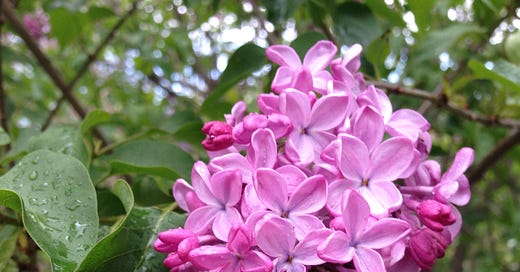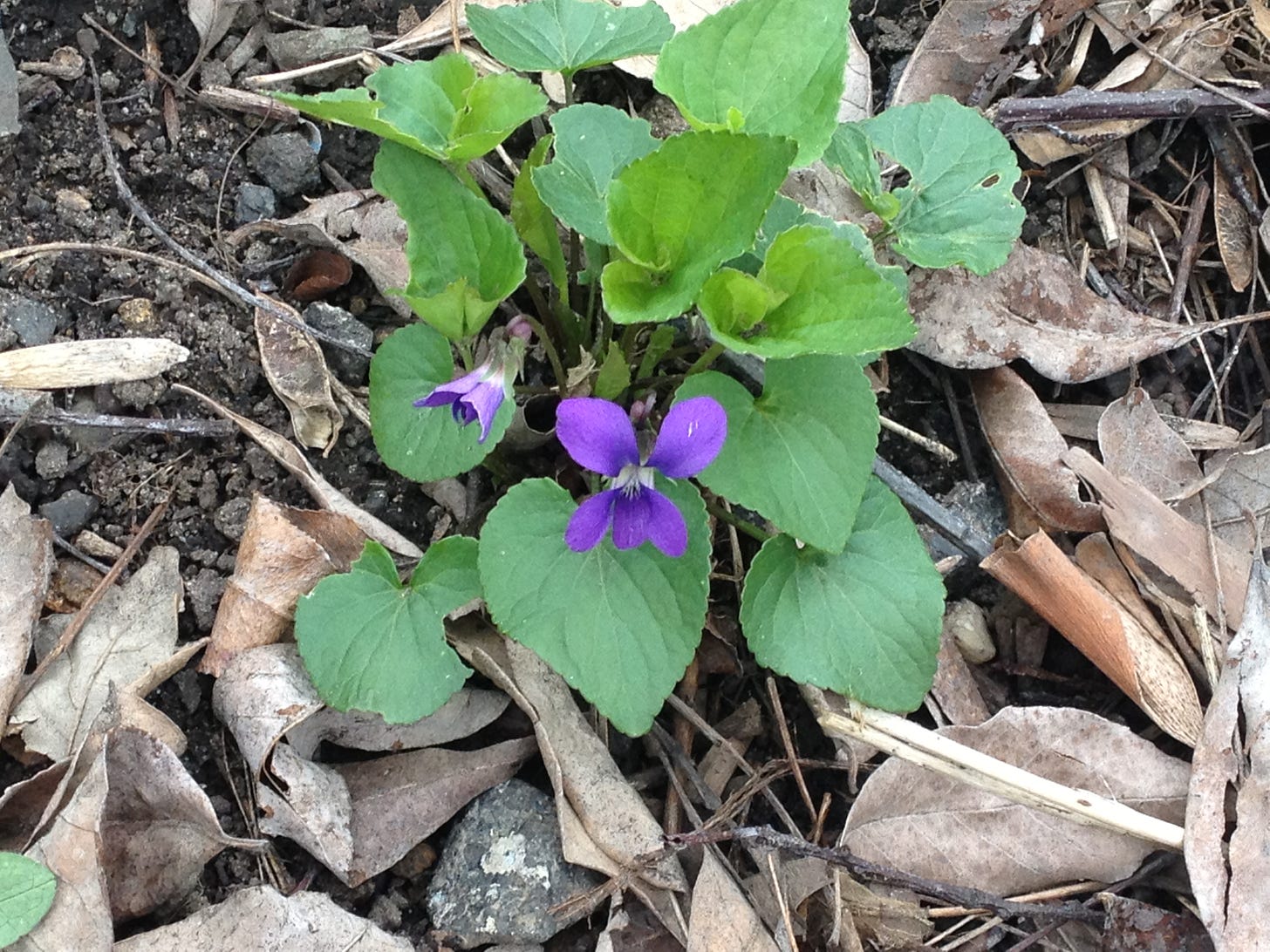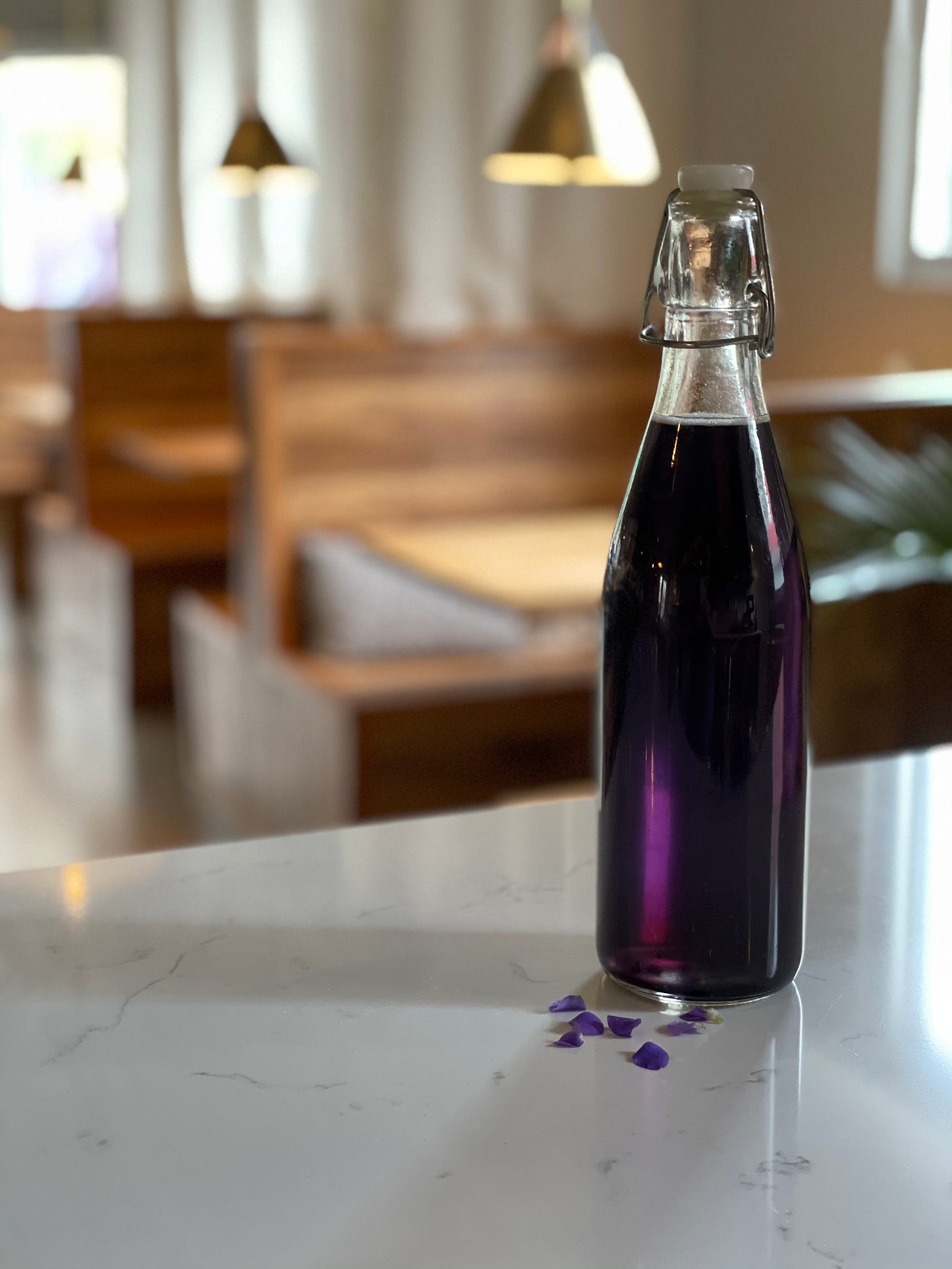Foraged Finds on Earth Day
I often hear people at this time of year say, spring is my favorite season. I understand that for many this comes after months of gray, sleet-filled days, snow or slush on the ground, cars and leather boots ruined by over-salted roads. Months of seasonal affect disorder usurping our daily routines, houseplants barely hanging on in dimly lit hallways and the freezer and cupboards emptied of stocks, stews and the dilly green beans of last summer.
I understand how after months of winter, the first of the forsythia, cherry and lilac blossoms could seduce someone into proclaiming, spring is my favorite season! Still, I think that favorite seasons are a load of hogwash.
Each season brings something to look forward to. I may have just lambasted winter, but I love those cozy months of turning inward, reflecting over a steaming mug of tea.
Summer makes one feel like a kid in a candy store, everything so colorful and burgeoning you get a sugar-like high from the vegetable bedecked stalls at the farmers market.
Spring is the slow come on. It woos you with bloom after bloom. Seeing the first blossoms makes me feel as if I have just taken the dog on a 10 mile hike in the hot sun, my water bottle forgotten and then stumble upon a lemonade stand and just so happen to have a quarter in my pocket with which to purchase (inflation clearly hasn’t made its way into kids lemonade stands in this fantasy) a thirst-quenching cup of the most delicious drink I will probably ever taste in my entire life. I may over exaggerate, but isn’t spring an over exaggeration in and of itself? Trees laden with blooms, daffodils almost too earnest with their straight necks and trumpeting faces? The spring rains that blanket the valley and water-log those freshly made garden beds? And violets, oh my word the violets!
Today, Earth Day, I’m thinking about the small spring bounty that can be found in my backyard. I’m not talking about the sole crop that is ready in my garden; those little finger radishes. I am talking about foraged finds. Our yards are full of edible plants that often go unnoticed. Chickweed, garlic mustard, stinging nettle, and one or my personal favorites, violets.
Wild Violet, Viola sororia, can be found in most of our backyards (to many a lawn fanatics chagrin). A native, low-growing perennial, it favors partial shade and moisture-rich soils. It can be identified by its heart-shaped leaves with serrated edges. The flowers are purple, white or white with purple centers and are held on upright stems. Both the leaves and the flowers are edible, with the former containing high levels of vitamins A and C. The leaves can be added to salads, cooked or even made into pesto. Try adding them to the chickweed pesto recipe found in our spring issue! The flowers also make a beautiful addition to salads, can be made into jelly, candied for gorgeous baked good toppers or, made into a colorful syrup— a delightful ingredient in your spring cocktail (or lemonade or iced tea) regime.
Violet Simple Syrup Recipe
Yields ~ 2 Cups simple syrup
Ingredients
4 Cups violet blooms, loosely packed, stems removed
1 Cup distilled water
1-2 Cups granulated sugar
Lemon juice
Bring the water to a simmer in a small pot. Remove from heat and let stand for 5 minutes, cooling the water slightly (adding the blossoms directly after boiling will leach their beautiful color). Add violet blossoms to the pot, stir and let the mixture cool completely. Cover with a kitchen towel and let stand for 24 hours.
Strain the violet infused water through a fine meshed sieve, pressing gently on the blossoms to strain off any additional liquid. Measure violet water and place in a double boiler over medium heat, adding granulated sugar at a 1:1 violet water to sugar ratio. Do not simmer or boil as you will lose the color of the syrup, instead warm just enough to dissolve the sugar.
Once the sugar has dissolved, remove from heat and add a few drops of lemon juice, this will turn your violet water a deep purple. Adding too much lemon can change the color entirely, so be careful.
Place the syrup in a bottle or jar in the refrigerator for up to 6 months.
If you’re looking for another violet recipe, we recommend trying out this Spring Tonic recipe from our friends over at Edible Columbus!
How to Celebrate Earth Day
Support local businesses
If you don’t have a backyard to forage in (or if violet lemonade isn’t your cup of tea), perhaps spend today frequenting a local purveyor, farm, market, bakeshop or other business that supports sustainable, local agriculture.
Find a new eco-centric Podcast
Climate Cuisine discusses how sustainable crops are used in similar climates all over the globe. Learn why all grocery store bananas taste the same or how cactus is used by the textile industry. All episodes are under 30 minutes and can be found on Apple Podcasts or Spotify
Watch a documentary
Newtok may be the first village in modern times that is relocating due to climate change. Learn more about the culture, community and struggles this village faces by watching this film.
Spend a little time outside
Even if you just step out on your lunch break, walk around the block, notice the world around you, maybe hunt for some violets or garlic mustard and reflect on your surroundings.
Remember
Joy Harjo - 1951-
Remember the sky that you were born under,
know each of the star's stories.
Remember the moon, know who she is.
Remember the sun's birth at dawn, that is the
strongest point of time. Remember sundown
and the giving away to night.
Remember your birth, how your mother struggled
to give you form and breath. You are evidence of
her life, and her mother's, and hers.
Remember your father. He is your life, also.
Remember the earth whose skin you are:
red earth, black earth, yellow earth, white earth
brown earth, we are earth.
Remember the plants, trees, animal life who all have their
tribes, their families, their histories, too. Talk to them,
listen to them. They are alive poems.
Remember the wind. Remember her voice. She knows the
origin of this universe.
Remember you are all people and all people
are you.
Remember you are this universe and this
universe is you.
Remember all is in motion, is growing, is you.
Remember language comes from this.
Remember the dance language is, that life is.
Remember.Thank you for reading this newsletter. If you just joined our weekly email newsletter, welcome and thank you.
Until next time,
Lisa








